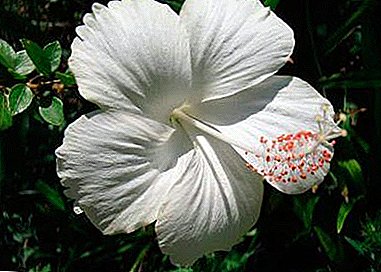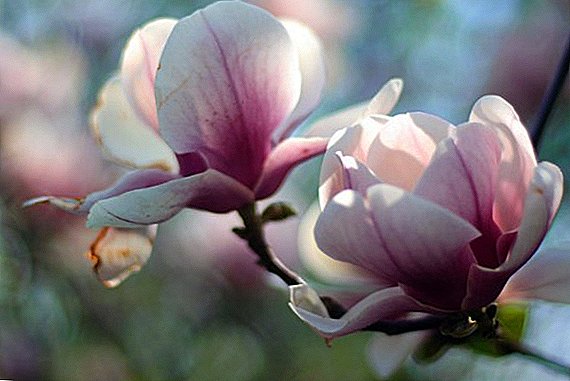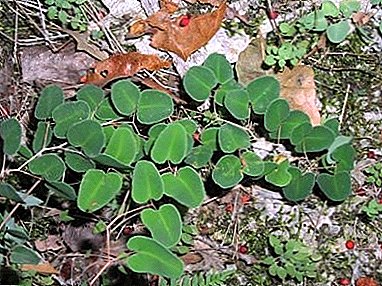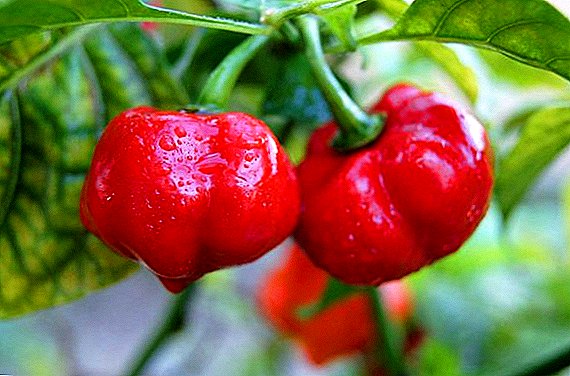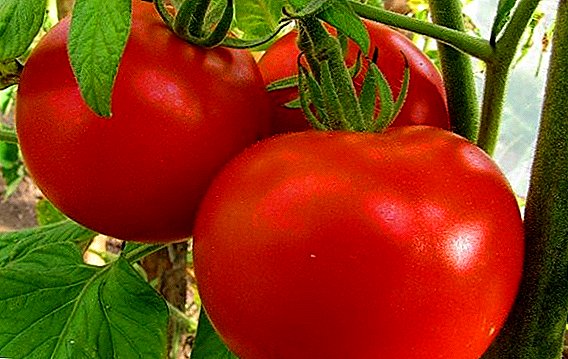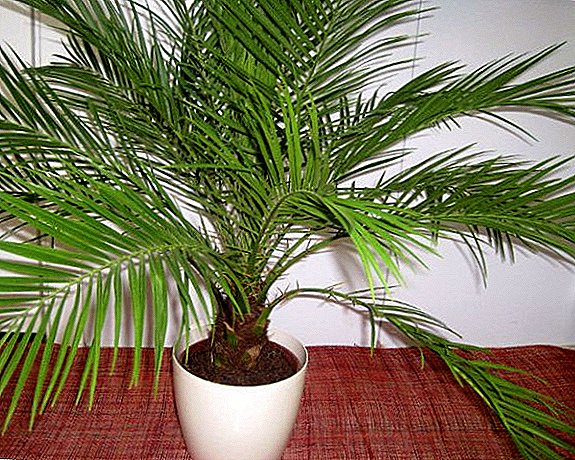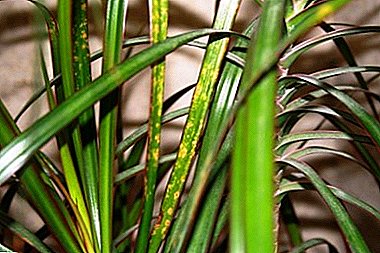
In the tropics, dracaena grows in conditions of sufficient humidity, temperature and good soil conditions.
When the room content must take into account these facts and strive to "recreate" the natural environment.
With insufficient care dracaena gets sick and is affected by pests. Consider diseases and pests dracaena, photos and their treatment, care.
Growing problems
Mistakes in growing dracaena cause certain troubles, which are manifested by plant ailments:

- The leaves turn yellow.
The reasons why leaves begin to dry: natural wilt or improper watering.
Natural wilting is a natural process caused by plant growth. Each piece of dracaena lives for about two years and once it is time for its extinction. Therefore, the lower leaves of the plant may turn yellow.
First, the tip turns yellow, and then the entire leaf dries out. This wilting occurs slowly, so the dried part can be removed gradually, thus preserving the decorative appearance of the plant.
Yellowing young leaves occurs in violation of watering. For dracaena, both dry soil and too wet are harmful. Moderate humidity with dried up top layer is an ideal irrigation option.
- Leaves faded and dropped.
- Leaves faded and dropped.
Cause: hypothermia.
Dracaena badly tolerates temperatures below 14 degrees Celsius, as well as drafts and cold air flows. If you place the plant in heat and spray it with warm water, then it may come to life.
Supercooling is fraught with root decay. In this case, the plant must be transplanted by removing the rotten roots.
- Dry ends of leaves.
- Dry ends of leaves.
The reasons dry leaves: dry air, lack of or overabundance of top dressing.
When dry tips appear at the plant or stains on the edge of the leaf, care should be taken to create more comfortable conditions. To preserve the decorative look, the dried ends are cut.
- The leaves fall and the young shoots dracaena wither.
- The leaves fall and the young shoots dracaena wither.
The reasons the fact that the plant sheds leaves: hypothermia of the earth, excess moisture in the soil.
If the leaves fall in large numbers, the plant is recommended to be grafted.
- Brown spots on leaves.
- Brown spots on leaves.
Cause: Burn caused by direct sunlight.
In the event of a burn, wet spots appear first, which then dries out.
In order to avoid this dracaena should receive gentle sunlight.
- Leaves rot.
- Leaves rot.
 The reasons: waterlogging, lack of light and heat or an infectious disease.
The reasons: waterlogging, lack of light and heat or an infectious disease.
If a yellow border forms around the spot, then it is bacteriosis.
If the rim is missing, the reason lies in insufficient care.
To avoid decay, you need to revise the conditions of the plant.
- Blacking young leaves.
- Blacking young leaves.
The reasons: no transplant over a long period or a glut of fertilizers.
Dracaena needs a transplant every 2-3 years. If the dracaena is not transplanted in time, then salts accumulate in the soil, which leads to damage to young leaves.
And then a video about why the leaves dry at dracaena.
Diseases
Like all plants, dracaena is subject to certain diseases.
Alternaria
This ailment is manifested by manifestation in different parts of the plant. rounded brown and black spots. In these spots clearly visible rings of dark and light color. With further development of the disease, the leaves turn black and are affected by the spores of the fungus.
Heterosporosis
 The disease is characterized the formation of yellow spotswhich soon become light brown in color with a dark line around.
The disease is characterized the formation of yellow spotswhich soon become light brown in color with a dark line around.
Over time, the spots increase and a dark patina with fungal spores appears on them. If the plant is not treated, the leaves will begin to dry.
Phyllosticosis
With this disease on dracaena appear large yellow - brown spots with a greenish border. Spots can be round or of indeterminate shape, subsequently covered with spores of the fungus.
Phyllosticoses affect adults and old dragon plants when the soil and air moisture conditions are disturbed.
Bacteriosis
This disease causes softening of the tips of the leaveswhich further leads to their decay.
Another manifestation of bacteriosis is dark, decaying areas on the sheet, surrounded by yellow oily stripes. It is also possible the formation of small round ulcers on the stem.
Bacteriosis is an infectious disease caused by a number of reasons: high humidity of the air and soil, lack of fertilizers, high temperature of the surrounding atmosphere.
Spotted wilting
This viral disease is rare. On the leaves appear brown spots and longitudinal lines. Young develop slowly and deform.
Treatment of diseases
The treatment of such diseases as Alternaria, heterosporosis, phyllossticosis, is carried out using antifungal drugs. You can use oksihom, topaz and other drugs containing copper.
With the defeat of bacteriosis rescue dracaeni is not possible, since this insidious disease develops rapidly and instantly leads to death. The plant is destroyed.
Pests and how to deal with them
The pest is sometimes affected by pests. These include shchitovki, thrips, mealybug and spider mite. It is helpful for the gardener to know the signs of the defeat of these dangerous guests and how to fight.
Shchitovka
A flap is an insect of 2-5 millimeters in size, covered with a yellowish scute. Suck the juice from the plant. The leaves turn pale and fall off.
Shchitovka treacherous because of her difficult to detect due to mobility. Therefore, the plant should be regularly inspected.
Affected dracaena is treated with soapy water using a soft sponge, and then insecticidal preparations are applied (intra-vir, decis, fitoverm).
Shchitovka on dratsena: photo pests.

Spider mite
Spider mite - small insects of a milky, green or orange color up to 1 mm in size. It settles on the back of the sheet and covers it with white spots. On the affected parts, you can see a small cobweb.
The plant slows growth and becomes an easy target for various ailments. Spider mite carry some diseases.
For treatment, the dracaena is washed with high temperature soapy water (47-50 degrees Celsius) and sprayed with acaricide.
Thrips
Thrips - insects up to 1-2 mm. Settle colonies on the bottom of the leaf plate. Top sheet dots and turns brown.
Thrips appear with dry air and elevated temperature in the room.
For the treatment of used insecticides.

Mealybug
The mealybug is an insect covered with a mealy white bloom. Sucks juice out of drapes, causing inhibition of its development.
With a powdery mealybum lesion leaves, spots, dots and white bloom, and in the sockets accumulate wax secretions that look like cotton. The insect lays larvae on the trunk and leaf plates.
White bloom (sticks) on dracaena - how to get rid of dots, spots on the leaves and on the trunk? The treatment begins with the removal of larvae with soapy water or a cotton pad dipped in alcohol, and continues with the treatment of the plant with insecticides. After the first treatment, the second is carried out with a gap of one week.
When complying with important rules for the care of dracaena remains healthy. The defeat of diseases and pests is possible only when creating circumstances unfavorable to the plant.


